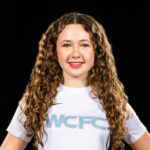Is heading the culprit in concussions? The mistake we are making
 There is just nothing like sitting on a panel to discuss concussions in youth soccer and looking out on the faces of parents gathered there. Nearly all of them have a child who has suffered a concussion, or one who continues to battle post-concussive symptoms.
There is just nothing like sitting on a panel to discuss concussions in youth soccer and looking out on the faces of parents gathered there. Nearly all of them have a child who has suffered a concussion, or one who continues to battle post-concussive symptoms.
The look in their eyes is fear. And fortitude.
They are determined to stop this injury from robbing their children of time on the field, performance in the classroom and from potentially inflicting damage that might hamper them for a lifetime. I understand their concern and I share it. Brains are just something we can’t mess around with. So, why aren’t we doing something about this?!
+READ: LeBolt: Five things parents aren’t doing to protect their kids from concussions
Well, we are doing a lot. There are tremendous resources pouring into researching this injury. For soccer, much of the discussion centers around the safety of heading the ball. Should children head? Is there an age that it’s safe to start? Is there a threshold number they shouldn’t exceed?
Does heading always cause symptoms? Are these lasting or transient? Do these predispose to concussion? Is there subconcussive damage we don’t see? Will regulations against heading actually reduce concussions? Is it not the heading but the physical contact when challenging for a ball? Has the game become too physical? Are we willing to ramp down that culture?
It is all complicated by the fact that age matters, impact force and direction matter, but acceleration of the brain inside the skull is hard to measure. Plus, some brains may be genetically more susceptible to concussive injury than others, and some or all symptoms may be delayed in appearing.
Currently, and unfortunately, researchers and medical advisors still disagree on what is the best course of action to take. The National Academy of Sciences Press has published this comprehensive report: Sports Related Concussions in Youth: Improving the Science, Changing the Culture.
Now… add the media storm around the soon-to-be-released movie “Concussion,” starring Will Smith as Dr. Bennet Omalu, the Nigerian physician who first identified Chronic Traumatic Encephalography (What is CTE? Learn more here) in his examination of the brain changes in 87 of 91 deceased former pro football players. CTE is a progressive degenerative disease of the brain found in athletes and others subjected to repetitive head trauma.
Tools to study head injury are getting better and being applied in promising research. But how much assurance can we take from the new work beginning at Virginia Tech on 9-to 10-year-old gridiron football players they plan to follow for five years?
What parent is willing to wait five years to find out if their child can head the ball safely? We need to know now.
The only current recommendation we can make to ensure head and brain safety is to avoid playing the game. And even that is actually no guarantee, as we see concussions occurring from accidents, slips and falls, locker knocks and random accidents. Last I read, French tennis star Eugenie Bouchard was still suffering from lingering effects of a concussion she sustained when she slipped and fell in the locker room after a match at the US Open.
If we refuse to let our kids miss all the good sport has to offer, but we want to keep their brain safe, what do we do?

Well, first we need to know what we’re dealing with. It’s an extremely complex injury. Concussion awareness efforts have ignited a national effort to educate coaches, parents and players (Check out the CDC’s “HEADS UP” resource here) about the signs and symptoms of concussion, which conclude: “When in doubt, sit them out.” But what if symptoms don’t show up until tomorrow?
Currently, I am seeing three approaches proposed as a way to address this issue in youth soccer: protective head gear, age limit regulations, and rule changes to reduce increasingly physical play.
- Protective head gear: The NAP report (cited above) says don’t count on head gear to keep kids safe: “The marketing of some protective devices designed specifically for youth athletes, such as mouthguards and soccer head gear, has included statements that these devices reduce concussion risk without sufficient scientific foundation to support such claims … Current testing standards and rating systems for protective devices do not incorporate measures of rotational head acceleration or velocity and therefore do not comprehensively evaluate a particular device’s ability to mitigate concussion risk.”
Put simply, a child who gets hit from the side, unawares, and/or has head and neck muscles too weak to resist the blow, may experience a concussion while another child may not, even though wearing the same head guard. Since we know individual concussion history and subconcussive hits matter — and often headgear is worn to protect against another damaging blow — the preventive benefits are again inconclusive.
+READ: Growing concussion concerns lead to stricter regulations in ENYYSA
The National Operating Committee on Standards for Athletic Equipment (NOCSAE) is actually commissioned to test sport gear like helmets, goggles, balls, etc. according to their safety claims, but the individuality of risk for this injury is proving confounding.
 Age-limit regulations: The Safer Soccer campaign, with high-profile proponents including Brandi Chastain and concussion medical expert Dr. Robert Cantu, are calling for regulations prohibiting heading in youth soccer players younger than 14 years old. While the evidence isn’t yet clear that delaying heading will reduce concussions, this may seem prudent and practical — although it may not be practicable.
Age-limit regulations: The Safer Soccer campaign, with high-profile proponents including Brandi Chastain and concussion medical expert Dr. Robert Cantu, are calling for regulations prohibiting heading in youth soccer players younger than 14 years old. While the evidence isn’t yet clear that delaying heading will reduce concussions, this may seem prudent and practical — although it may not be practicable.
While the initiative has successful media exposure, our soccer culture isn’t signing on in droves. Moms Team reports: “While the list of organizations and experts supporting the campaign is impressive and growing, the number of schools which have banned heading in the year since the campaign was announced remains paltry (a recent visit to Sports Legacy Institute’s website lists just three schools in the entire country, two private and one public middle school, which have joined the campaign so far.) Read more here.
Then there are questions of implementation, which all teams would need to agreed to do. How do we play the ball in the air while we are under 14? Have you ever tossed a ball up into a scrum of 8-year-old boys and watched what happens? They bounce like Mexican jumping beans elbowing each other out of the way to bounce it off the top of their heads.
Do we require that the ball stays on the ground, more like futsal? Do we allow them to pull it from the air to the ground with their hands, a la hockey goalies, before playing it with their feet?
+READ: Concussions: Seeing double-standard
It’s clear we’ve got some solving to do with this, because ‘no heading’ will raise other questions and certainly will completely change the way kids play the game.
Perhaps the biggest concern with this approach is what happens to kids when they are finally released at age 14 to head the ball? Now our teens with their fast-growing brains, atop fragile frames, are attempting to head a full-size, adult-weight ball, sent at 50 miles per hour or more towards their head.
 Would it not be better to start teaching heading at the age when the ball naturally takes flight during the run of play? We can use a softer, lighter ball — a beach ball, a nerf ball, a playground ball — during practice to teach the feel of a skill they may not put into play with a full-size soccer ball until much later. But first, we teach them to control it with all parts of their body, as they are getting to know their bodies and what they can do.
Would it not be better to start teaching heading at the age when the ball naturally takes flight during the run of play? We can use a softer, lighter ball — a beach ball, a nerf ball, a playground ball — during practice to teach the feel of a skill they may not put into play with a full-size soccer ball until much later. But first, we teach them to control it with all parts of their body, as they are getting to know their bodies and what they can do.
- Rule changes directed at reducing rough play. Heading may be the activity going on when injury happens, but the mechanism is most often contact with another player. “Reducing this contact through better enforcement of existing rules, enhanced education of athletes on the rules of the game, and improved coaching of activities such as heading … will more effectively prevent concussions, as well as other injuries, than will simply banning heading,” says Dawn Comstock, PhD, an Epidemiologist and advisor to MomsTeam Sports.
Many coaches who have been in the game a long, long time would concur. They lament the level of physicality that has seeped into our youth sport and soccer culture during their tenure. “Girls play like…BOYS!” one recently told me, complaining he had one out with a serious concussion that involved seizures and another with a jaw broken in three places. Coaches shake their heads saying kids are “so much stronger and faster these days.” Speed and strength may not kill but, uncontrolled, it certainly can injure.
That’s why I’d like to suggest a fourth alternative to correct an error I believe we are particularly prone to in the United States. We need to stop separating fitness and conditioning from skills training in our sport. We may celebrate that our “fitness” will overcome our opponents’ skill in the tight game and the final minutes, but is that the main thing we want to teach?
+READ: LeBolt: Five ways to ruin preseason soccer training
When we relegate fitness training to pre-practice runs, end of practice sprints or weight room sessions separate from playing the game, are we giving kids the idea it should take precedence over skill if it will work for us? If we can use superior size and strength to shove kids off the ball, why learn to tackle cleverly? If we can use our superior speed to run past kids, why learn to manipulate the ball creatively? Kids know this intuitively. Absent sufficient skill, this is exactly what they’ll do.
What we need to communicate, teach and train in children is:
 How to use their strength to establish position on the ball, and to shield or turn.
How to use their strength to establish position on the ball, and to shield or turn.- How to use their power to thrust themselves high and straight for the header.
- How to rely on core strength so they can lift arms wide to protect themselves from would-be challengers.
- How to use their superior speed to get into position first to play the ball.
We need to show them how to use their fitness to their advantage in the game, not in place of the game.
Along with this, we need to caution against and penalize play that uses force or overt aggression rather than skill to make the play. Perhaps we need to call fouls more like basketball, a sport where we often see shining examples of astounding skill. We certainly need to card unsporting behavior like coming in late and out of position to play the ball in the air, which so often has bloody, debilitating, concussion-prone consequences.
+READ: No Pain, No Game? How to listen to your body when “new-season soreness” hits
Before we put our team logos on headgear that can’t promise protection or regulate heading in a way which may delay development of a skill at a time when it can be patterned simply and safely, we need to teach the skill of the game — all the skill — complete with the physical components which will make players successful over the long haul.
And of course, we don’t teach any technique, including heading, simply by repetition. It’s the quintessential error of lazy teaching. To think that doing something over and over until we get it right will make us better at it is a fool’s errand.
Nope. We want smart kids that use their heads, and also their brains, for a whole lot more than soccer.
SOCCERWIRE MARKETPLACE
- Girls College ID Soccer Camp – Showcase Your Skills!
- Real Colorado Cup 2026
- Join a College Coaches Showcase Camp Today
- MICFootball Punta Cana 2026
- Dana Cup Hjørring 2026
- 15th Annual Loudoun Soccer College Showcase
- OFFICIAL FC BARCELONA SOCCER CAMPS
- New England Copa Surf 2026
- Adidas National Cup 2026
- visitRaleigh.com Showcase Series 2025, hosted by NCFC Youth











